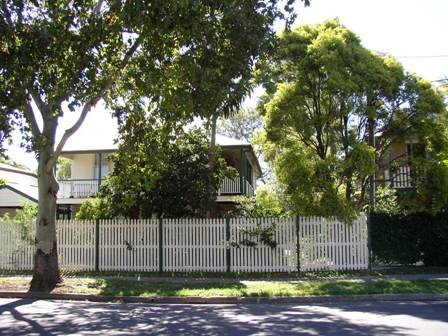Addresses
Type of place
Cottage, House
Period
Interwar 1919-1939, World War I 1914-1918
Style
Queenslander
Addresses
Type of place
Cottage, House
Period
Interwar 1919-1939, World War I 1914-1918
Style
Queenslander
29 Jamieson Street was built in 1917-20 under the Anzac Cottage Scheme, an initiative of the Queensland War Council under the sub-committee named the Anzac Cottage Trust. Its directive was to establish homes for widows and their dependants of enlisted men killed in the First World War. Construction of the homes was funded by the Queensland Lottery, ‘Golden Casket’, and they were built using volunteer labour. Only thirty-eight Anzac Cottages were built in Brisbane, many of which no longer survive. 21 Jamieson Street is important as a rare surviving example of an Anzac Cottage in Brisbane.
Lot plan
L745_SL7978
Key dates
Local Heritage Place Since —
Date of Citation —
Construction
Roof: Corrugated iron;Walls: Masonry
People/associations
Volunteer Labour (Builder)Criterion for listing
(A) Historical; (B) Rarity; (H) Historical associationInteractive mapping
Lot plan
L745_SL7978
Key dates
Local Heritage Place Since —
Date of Citation —
Construction
Roof: Corrugated iron;Walls: Masonry
People/associations
Volunteer Labour (Builder)Criterion for listing
(A) Historical; (B) Rarity; (H) Historical associationInteractive mapping
History
The Anzac Cottage Trust was established in Queensland in 1915 in an effort to ease the hardship experienced by the widows and children of soldiers and sailors killed in the First World War. The scheme provided timber cottages, mostly built on donated land and constructed by volunteer labour. Much of the material used for the construction of the cottages was supplied at cost price by many Brisbane businesses.
In September, 1915 the Anzac Cottage Trust was established in Brisbane as a sub-committee of the Queensland War Council. The committee’s objective was to acquire land for the construction of homes for the widows and dependants of enlisted men, both military and naval, killed in the war and to establish new homes on the land. The proceeds for the establishment of the cottages were funded from the profits made by the Queensland lottery “Golden Caskets”, lottery numbers three, four and five. This was an initiative of the Anzac Cottage Committee headed by Harry Coyne, MP.
The committee was also responsible for delegating who would occupy the houses. A prerequisite for occupancy was that the widow was to be of ‘good character’, remain unmarried and respectable. The widow was to pay a small rent of 1/6 per week as well as the rates and other expenses. The land was to be held in perpetuity by the Public Curator, with the widow or dependant signing a lease. The rental paid was to fund the ongoing maintenance of the cottages. If the widow was to re-marry it was required that the cottage be vacated.
In Brisbane thirty-eight Anzac Cottages were built, in 1917 the first one was opened in Wynnum. 21 Jamieson Street is a rare surviving example of a Queensland Anzac Cottage and as such plays an important role in Brisbane’s First World War history and the impact the conflict had on the Brisbane community in this period.
Description
21 Jamieson Street is a timber and tin home built in the then popular style of the Bungalow. It has a short-ridge bungalow roof and a front verandah that wraps around the side of the house. Some alterations have been made to the original design of the house including building underneath the house. However, the house still retains its original character.
Statement of significance
Relevant assessment criteria
This is a place of local heritage significance and meets one or more of the local heritage criteria under the Heritage planning scheme policy of the Brisbane City Plan 2014. It is significant because:
References
-
Environmental Protection Agency Cultural Heritage Citation, “Strathern”
-
Historic Titles, Department of Natural Resources and Water
-
Queensland Post Office Directories
-
Metropolitan Water and Sewage Survey Maps, 1949
Citation prepared by — Brisbane City Council (page revised September 2020)

